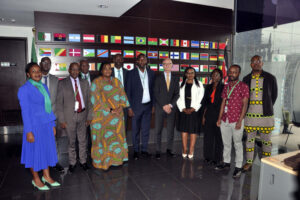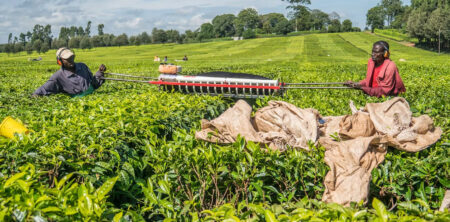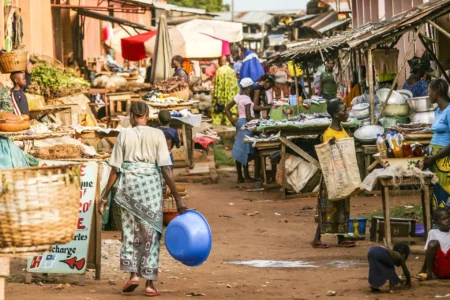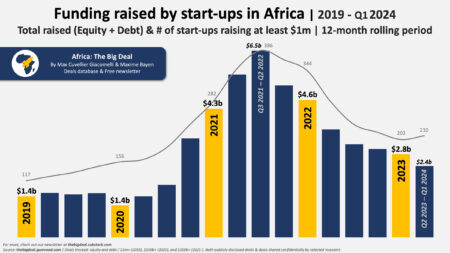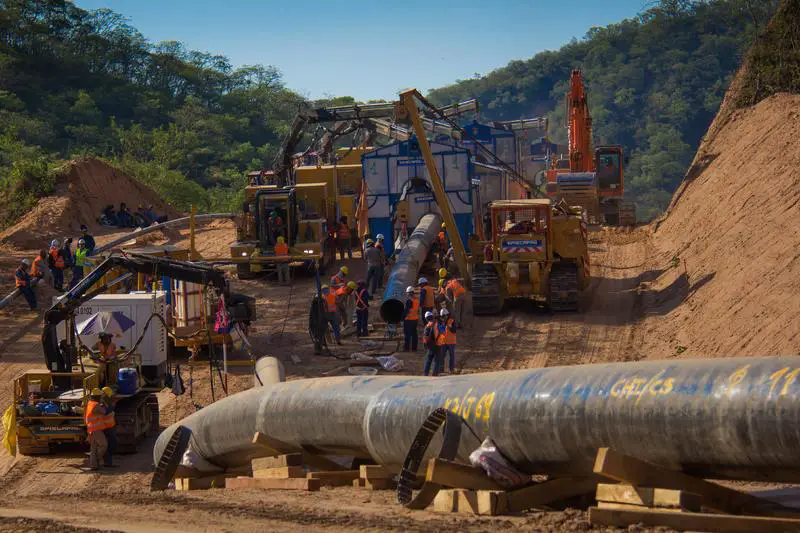Africa is big! Africa is growing and is projected to be more populous than it is now. Estimates indicate that nearly 2.8 billion people will inhabit Africa by 2060, according to the World Bank.
The high population could impact African countries depending on each respective country‘s reaction toward overpopulation and urbanization.
A crucial factor in this is land. To be more specific, urbanization of African economic hotspots ought to be analyzed effectively, because Africa is not open to the world as it supposed to be.
Not only that, but African cities are changing fast, and Africa requires a robust approach which is close to fool-proof to push the region towards sustainable development.
In this case, the Organization for Economic Co-operation and Development (OECD) report on Africa’s Urbanisation Dynamics 2020 enlightens the perspective quite vividly.
Kenya had more urban dwellers than the entire continent combined in 1950, and in 30 years, by 2050, Africa’s cities will accommodate an additional population of 950 million (OECD, 2020).
At present, minor changes are bending the social, political and economic geographic realities of the region, which begs for a holistic approach in understanding the reality of ongoing transformations.
There are rather critical lessons this report marks and it is vital to explore a few highlights that make sense to the entire urbanization debacle.
It is important to recognize also, the drawbacks that current urbanization status exposes the continent too. From closing its door to the world, focusing on nationalistic policies, overcrowding, disconnecting from foreign trade and investment, the costs to urban dwellers is huge.
African leaders are thus positioned to take decisive action toward socio-economic improvements, yet there seems to be a lagging approach to this.
Africapolis thinking matters
As Africa grows so does its knowledge base. In this case, a new line of thinking has emerged to make sense of the scenarios and get a hold towards better planning for the future.
Africapolis is an initiative designed to enable comparative and long-term analyses of urbanization dynamics in Africa (OECD, 2020).
“ Africapolis is based on a spatial approach and applies physical criteria—a continuously built–up area—and demographic criteria—more than 10,000 inhabitants—define an urban agglomeration,” the report argues.
Now the “Africanpolis“ novelty is ensued when a spatial approach to urbanization focuses solely on the concrete spatial manifestations of urbanization, which also make comparisons across countries and time, possible.
The concept calls for the economic, demographic, sociological or political approaches needed to be taken simultaneously into account.
Further, the report unveils the concept of the bottom-up approach, which defines an agglomeration as urban if its population exceeds 10 000 and it’s built environment contains no unbuilt spaces greater than 200 meters.
This thinking has also revealed the existence of urban agglomerations that are not recorded in official statistics, in areas that are considered to be rural.
For instance, in areas such as Nigeria‘s Onitsha, Ethiopia‘s Sodo and Hawassa, Kenya‘s Kisumu and Kisii and in Uganda‘s Mbale.
In 2015 nearly 50 per cent of Africans lived in urban agglomerations, 71 of them had more than 1 million inhabitants.
“However, it is the continued emergence of thousand of small towns and intermediary cities that is profoundly transforming African societies. These new urban agglomerations many rooted in rural transformation play a vital part in reducing distances between urban networks and in connecting the local and regional to the continental and global,” the report says.
It is with no doubt, the continent is experiencing a new shift in urban space, which means all new improvements must make sure Africa urbanization is more robust and strategic for excellence.
The critical factor here is how will governments ensure appropriate measures to safeguard population growth. This means what will they do to maintain sanitization, health, cleanliness, appropriate business structures that are conducive to living while building on economic growth. Do the socio-economic conditions enable governments to sustain economies, while ensuring pro-poor growth is maintained with the clear objective of economic expansion?
The reality is such that urbanization brings considerable problems, and whether or not governments are ready to tackle those are far more pertinent than to ensure that leaders stay in power for their own self-gain.
In fact, African leaders are well-poised to take decisions to implement sustainability measures, but the question remains, are they doing so, or are they just waiting for urban centres to explode with social-economic problems that can’t be fixed.
We all know that Africa is the next frontier, however, what does this mean for Africans themselves.
READ:Is the pandemic a blessing in disguise for real estate?
Understanding the Africpolis Economy
According to a 2017 report by the World Bank Africa’s Cities Opening Doors to the World, Africa’s urbanization needs to open door to fetch more economic benefits, as the current urban structure has been shut for decades.
READ:TO LET: Empty offices, amidst a real estate boom
Hence, with the Africapolis phenomenon, it is time for African urbanization landscape to move past limited non–tradeable goods and services.
“Producing for local markets limits returns to scale. The consumer base of one city, however large, is much smaller than a regional or global market. Specializing in nontradable for local consumption leads to diminishing returns (both for technological reasons and because prices are set locally and decline as supply increases). In contrast, export markets are key to a dynamic industrial sector” the World Bank (WB) report stated.
If countries are able to focus on comparative advantages of their own, they will be better equipped to trade across borders. This will enable greater tax revenues for the governments to provide improved social services.
The truth is that do many of these social services actually trickle down to the lower rungs of the economic ladder. That’s a question that only a few can answer and the elimination of bureaucratic sinecure must adhere to.
Tradeable goods and service face elastic global demand and allow for agglomeration of economies, which increase returns to employment. Rapidly growing cities require growth in employment — and the returns to expanding employment are highest in tradable sectors, according to the report.
Also, the report points out other issues the region needs to attend to, namely, crowded and disconnected cities. These have been two chronic factors limiting prosperity to many cities in Africa for decades.
In essence, this poses massive threats to economic growth. Disconnected cities tend to be spatially dispersed with fewer structures to enable operations, such as roads or transport systems, making commuting costly, and simultaneously getting locked within and not get open to the rest of the world.
Crowded cities also tend not “to be economically dense or efficient enough to promote scale economies and attract capital investment,” the report says.
Further, the report highlights that “in principle, cities should benefit businesses and people through increased economic density. Firms clustered in cities should be able to access a wider market of inputs and buyers, with reduced production costs thanks to scale economies”.
Africa needs to prepare in terms of satisfying future infrastructure demands due to growth—taking present challenges as a case study to improve, housing and other physical structures, and amenities.
If it fails to do so, the problem Africa faces is chronic poverty and systemic situation that will constantly feed on itself. Overpopulation and urbanization will effectually create “slumification“ in major economic centres of various African countries. Thus, it is upon leaders to ensure that their economic policies actually have trickle-down effects and not one that aims to systematically focus on taxation and over-taxation.
Many still have to learn, but the question remains, will a newer generation of African leaders actually do what they’re being told to do, or will Africa continue the path it is on now.
READ:Planning is more important than prediction for Africa’s property sector now
